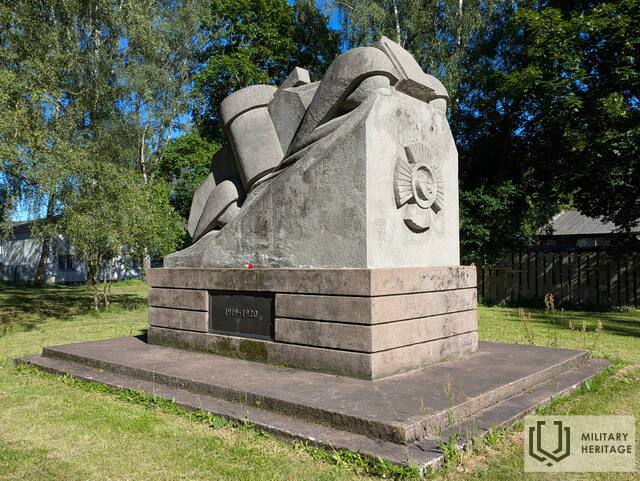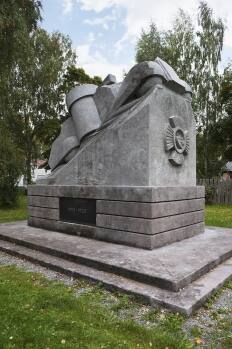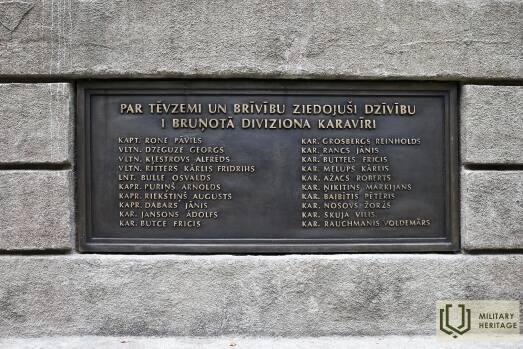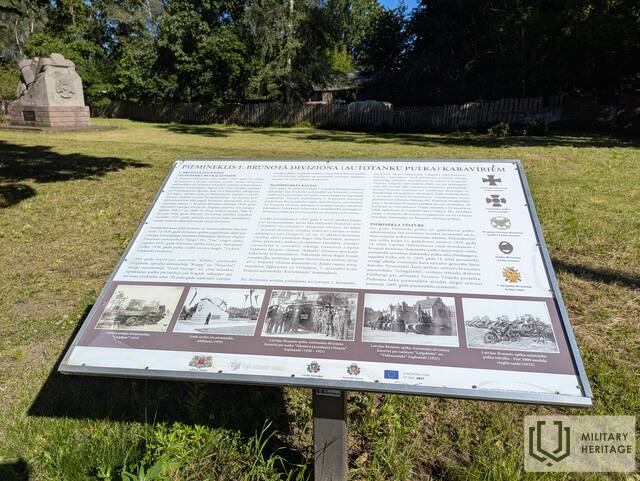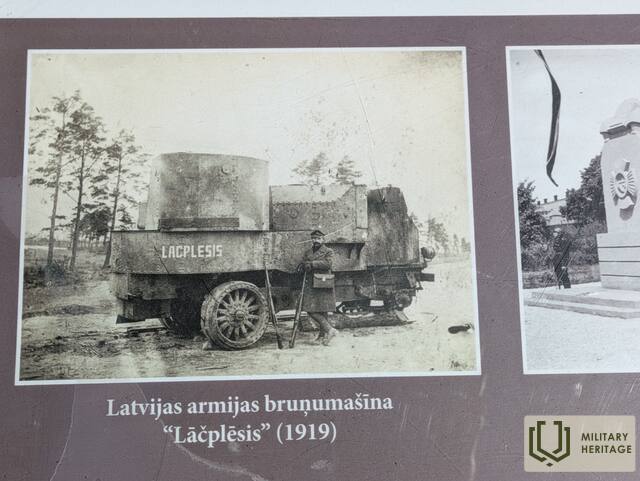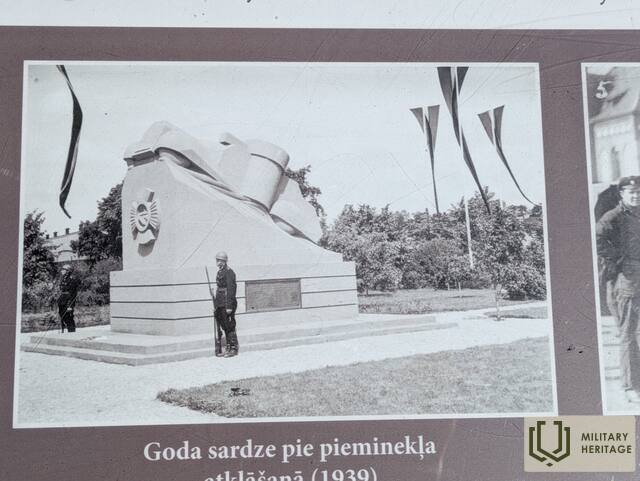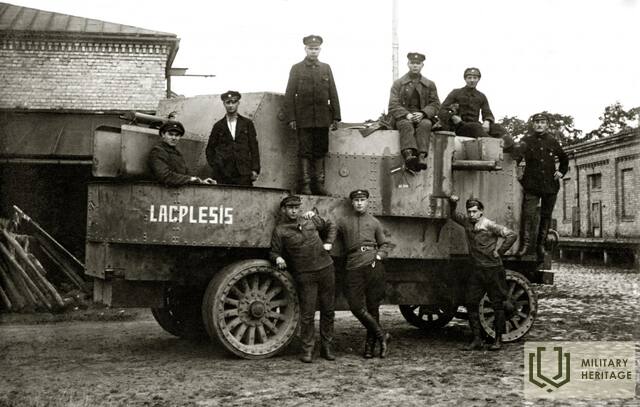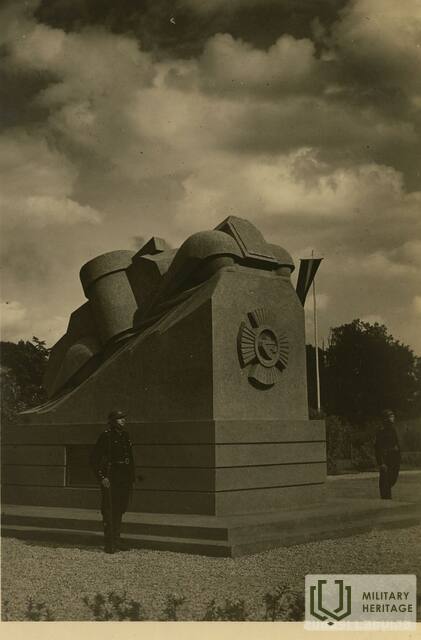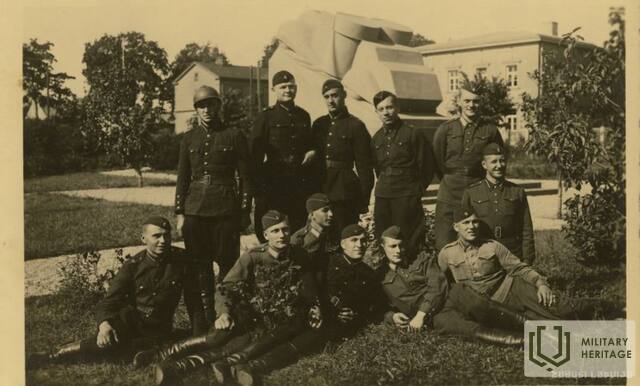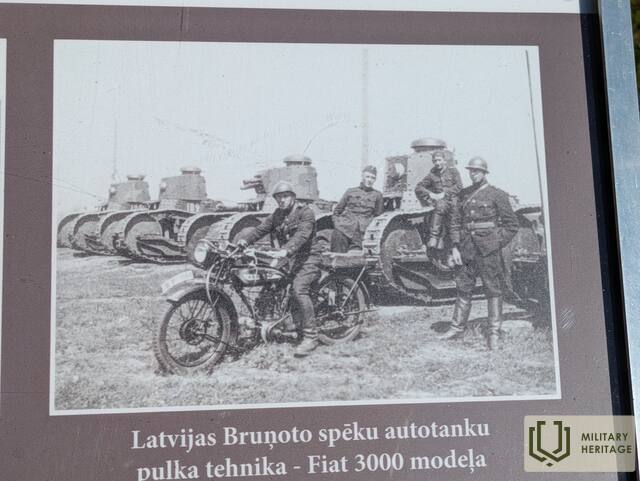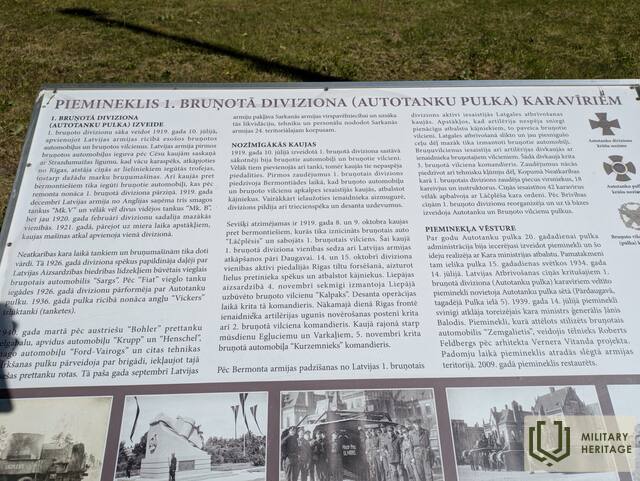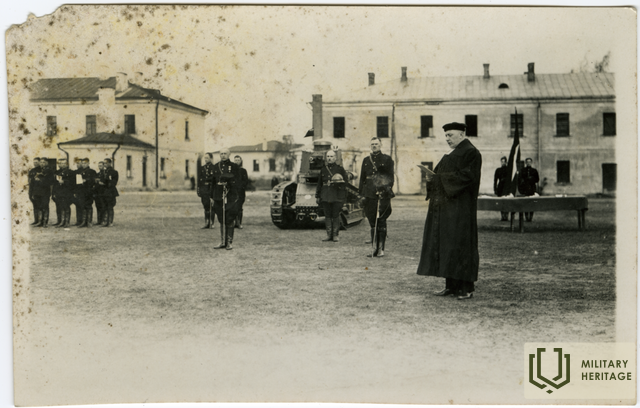Monument to the soldiers of the Latvian Army Tank Regiment
Memorial site
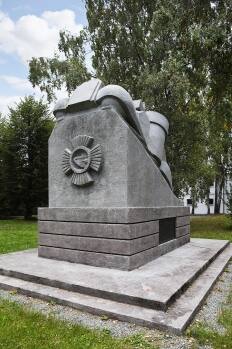

The monument was unveiled in 1939 as a tribute to the fallen fighters of the 1st Armored Division (later the Tank Regiment) of the Latvian Army. It depicts an armored vehicle rushing up a hill, and on the front of the pedestal - the unit's badge. Made in the Art Deco style, it is a valuable work of art that tells the story of the "iron soldiers" of the War of Independence.
Armored cars were characterized by speed (max. - 60km/h) and the ability to surprise opponents by suppressing them with machine guns. Built on a passenger car frame with 4 - 8 mm armor plates, armed with machine guns or small-caliber guns. Ammunition and fuel reserves were calculated for half an hour of continuous combat. It had up to 5,000 cartridges, up to 30 hand grenades or other explosives at its disposal. An armored car required a large amount of fuel, for example, "Lāčplēsis" consumed 1,350 l of fuel in November 1919.
Its crew consisted of 3-5 men who performed a dangerous and responsible task. Mounted in combat vehicles, they went towards the enemy with a large amount of ammunition. Often the engines were overworked and stopped working. The combat vehicles and their crews inspired and gave hope for victory.
Today, you can see the monument, which is located near the former barracks of the Latvian Army's Tank Regiment.
Used sources and references:
Kalļķis, J. Br. The use of cars in offensive combat. Military Review, No. 3. 1934.
Eserts, M. Iron Soldiers or the History of Latvian Fighting Vehicles. 1998.




